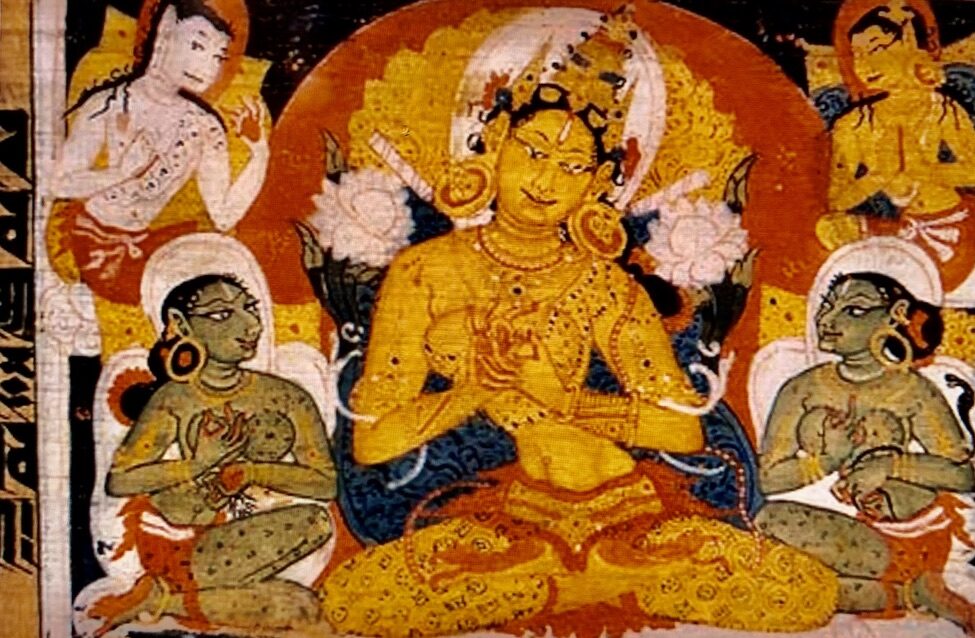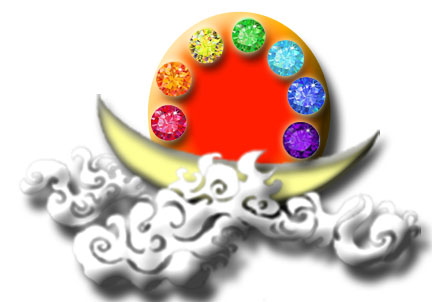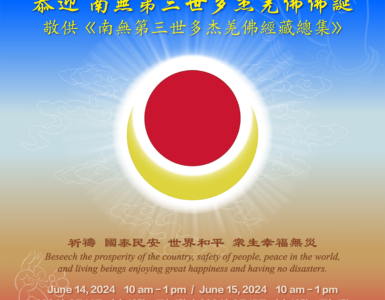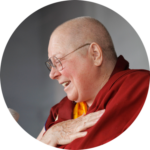
At the end of Expounding the Absolute Truth through the Heart Sutra, H.H. Dorje Chang Buddha included a discourse He gave on “How to Realize Prajna.” He told us that “in order to benefit you disciples regarding how to truly realize prajna, how to use your actual experiences to grasp prajna, you must understand the rules and methods of continual practice.” He also told us that although many people think they know what the Heart Sutra is and think they are practicing it, even devote their entire lives to the practice of this sutra, “most of these people still end up being separate and apart from prajna.”
We have been spending months reading and studying the Buddha Master’s sutra on the meaning of the Heart Sutra and need to pause and make sure that we have an understanding of these rules and methods of continual practice that we need to follow so that we can gain the truth and beneficial effects of our efforts. We will take a break from what we have been doing and skip to the end and see what we need to do in our Dharma practice to benefit from our studies.
In this discourse, the Buddha Master said: “When Shakyamuni Buddha expounded Buddha Dharma in this world, He expounded 84,000 Dharma methods. To put it explicitly, they are nothing other than two words: cause and effect. Solving the matter of cause and effect is nothing other than two words: cultivating yourself. Realizing supernormal states and becoming a holy one is nothing other than two words: cultivation and Dharma. Relying on cultivation in one’s Dharma practice, one will naturally attain liberation and accomplishment. This was also the way of all Buddhas in the ten directions. Thus, we should be especially clear about what is meant by cultivation. Cultivation is to change the order of the maturing of causes and effects. The goal of cultivation is to actually transform causality. You decide which should mature earlier and which should be made to mature later. You have to transform causality.” This is building that wall of good karma that the Buddha Master taught us about in His discourse on “What Is Cultivation?”
We will explore how to do this in a series of classes on how to do this by studying what the Buddha Master taught in this discourse as covered in DCB26. If you want to have access to the recordings of the classes held on this material and the questions we will explore you will need to enroll in the Buddhist Studies or Xiuxing Seminary Program, but you can continue to attend the actual Saturday morning ZOOM sessions at 9:00-11:00 am Pacific Time by enrolling in C41, DCB21, DCB22, or DCB26. You will also need to register with ZOOM to receive a link if you do not already have one.
Dharma Practice Check List-Solitary Retreats
You can also go to R97X-Solitary Retreat-Xiuxing Practice Program and download the “Dharma Practice Check List” to make sure you have received the Dharmas you need to do a Solitary Retreat that may help you focus on what a more complete Buddhist Practice might look like. The list, I just added under curriculum, is available to anyone and not just those enrolled in the Xiuxing Seminary program, even though the Solitary Retreats are designed for those in the Xiuxing Seminary Program. CLICK for article on the program. These Solitary Retreats are designed to help you understand and follow the methods of “continual practice.”
Here’s what you need to do to join this class. Click underlined bold type items to access links.
STEP ONE: Enroll in Learning from Buddha College & Seminary Course DCB26 as either a Buddhist Studies or Xiuxing Seminary Student. Once enrolled you may go to course and download the questions covered in the discussions and watch videos of sessions held on the earlier classes. You may also watch and participate in the ZOOM sessions for this class by enrolling in C41(A)-Three Principal Stages & Paths of Buddhist Practice, but you will not be able to access the questions or the video recordings of the DCB zoom classes. C41(A) is available for Auditing Students with a free membership as well as the full membership students in the Buddhist Studies and Xiuxing Seminary programs. The DCB courses do require membership in either the Buddhist Studies or Xiuxing Seminary programs.
STEP TWO: Register for Zoom Discussions (Only those enrolled in courses C41(A) or DCB22 or DCB26 can attend these zoom discussions).




Add comment